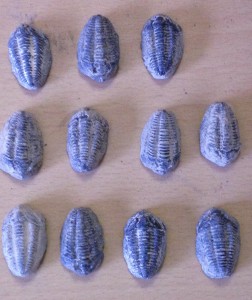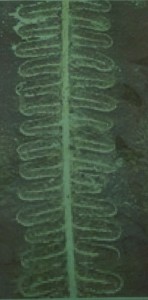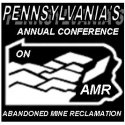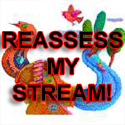 EPCAMR is proud to introduce a hands-on elementary educational program that teaches students about fossils, ancient creatures and plants frozen in time. Program materials were organized into portable trunks by EPCAMR Intern, Pamela Katner, and VISTA, Valerie Taylor, in 2005.
EPCAMR is proud to introduce a hands-on elementary educational program that teaches students about fossils, ancient creatures and plants frozen in time. Program materials were organized into portable trunks by EPCAMR Intern, Pamela Katner, and VISTA, Valerie Taylor, in 2005.
In order to make this program a reality, EPCAMR worked with a number of partners in the area, such as the Hanover Area School District, Earth Conservancy, Boy Scouts of America, and Carbon County Environmental Education Center, to name a few.
 These organizations, and others, played an intricate role in helping EPCAMR find resources and information on fossils to develop an educational program for the Hanover Area School District. During the initial project, EPCAMR worked with 150 2nd graders over a two-day period. EPCAMR staff planned out a variety of fun educational activities to teach students about prehistoric creatures and plants, fossil types, and how fossils are formed. The goal of the project was to allow students to learn about fossils, nature, and plants throughout Northeastern Pennsylvania.
These organizations, and others, played an intricate role in helping EPCAMR find resources and information on fossils to develop an educational program for the Hanover Area School District. During the initial project, EPCAMR worked with 150 2nd graders over a two-day period. EPCAMR staff planned out a variety of fun educational activities to teach students about prehistoric creatures and plants, fossil types, and how fossils are formed. The goal of the project was to allow students to learn about fossils, nature, and plants throughout Northeastern Pennsylvania.
 Each day, 75 students traveled to the Luzerne Conservation District Environmental Education Center in Shavertown, Pennsylvania, where they learned the best locations in the Anthracite Region to find fossils and what types of fossils they were likely to find. It was a fun opportunity for the students to explore where they live and find fossils! The students were then able to look at the EPCAMR fossil collection and create a book of fossil imprints by rubbing over them with crayons to take home. In addition, the students had a chance to draw a picture of a plant or underwater sea creature they would hope to discover one day as future explorers and archaeologists.
Each day, 75 students traveled to the Luzerne Conservation District Environmental Education Center in Shavertown, Pennsylvania, where they learned the best locations in the Anthracite Region to find fossils and what types of fossils they were likely to find. It was a fun opportunity for the students to explore where they live and find fossils! The students were then able to look at the EPCAMR fossil collection and create a book of fossil imprints by rubbing over them with crayons to take home. In addition, the students had a chance to draw a picture of a plant or underwater sea creature they would hope to discover one day as future explorers and archaeologists.
 The students also learned about how fossils are formed. This activity included looking at clear 2-liter plastic bottles filled with layers of soil, mulch, and sand, allowing students to see different soil layers and learn about rock and fossil formation. The students were then able to dig through the layers to discover the fossils hidden within. They were also able to use the EPCAMR Fossil Box, an element created as part of an Eagle Scout project. This gave the students a chance to dig in a larger area and feel like archaeologists. The final activity the students participated in was a worksheet that tested their new fossil knowledge by matching pictures of fossil imprints with the plant or animal that left the trace.
The students also learned about how fossils are formed. This activity included looking at clear 2-liter plastic bottles filled with layers of soil, mulch, and sand, allowing students to see different soil layers and learn about rock and fossil formation. The students were then able to dig through the layers to discover the fossils hidden within. They were also able to use the EPCAMR Fossil Box, an element created as part of an Eagle Scout project. This gave the students a chance to dig in a larger area and feel like archaeologists. The final activity the students participated in was a worksheet that tested their new fossil knowledge by matching pictures of fossil imprints with the plant or animal that left the trace.
Check out these Fossil Activities!












You must be logged in to post a comment.